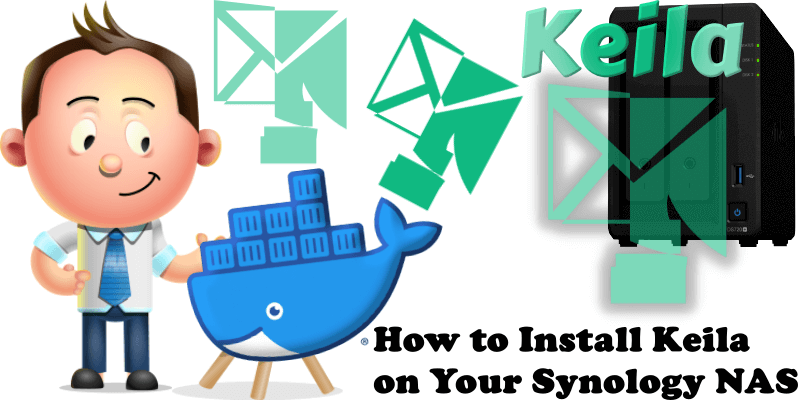
Keila is an Open Source alternative to newsletter tools like Listmonk, Mailchimp or Sendinblue. With Keila you can easily send out newsletter campaigns and create sign-up forms. For smaller newsletters, you can use your own email inbox to send out campaigns. For larger newsletter projects, AWS SES, Sendgrid, Mailgun, and Postmark are supported, in addition to SMTP. In this step by step guide I will show you how to install Keila on your Synology NAS using Docker & Portainer.
STEP 1
Please Support My work by Making a Donation.
STEP 2
Install Portainer using my step by step guide. If you already have Portainer installed on your Synology NAS, skip this STEP. Attention: Make sure you have installed the latest Portainer version.
STEP 3
Make sure you have a synology.me Wildcard Certificate. Follow my guide to get a Wildcard Certificate. If you already have a synology.me Wildcard certificate, skip this STEP.
STEP 4
Go to Control Panel / Login Portal / Advanced Tab / click Reverse Proxy. Follow the instructions in the image below.
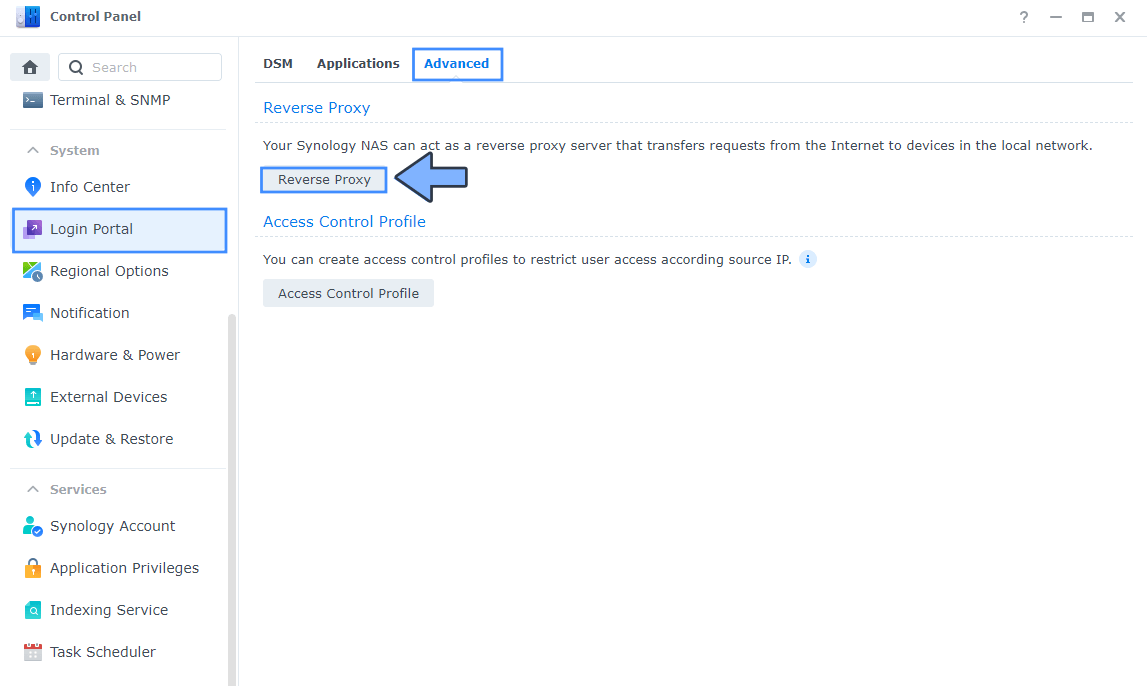
STEP 5
Now click the “Create” button. Follow the instructions in the image below.
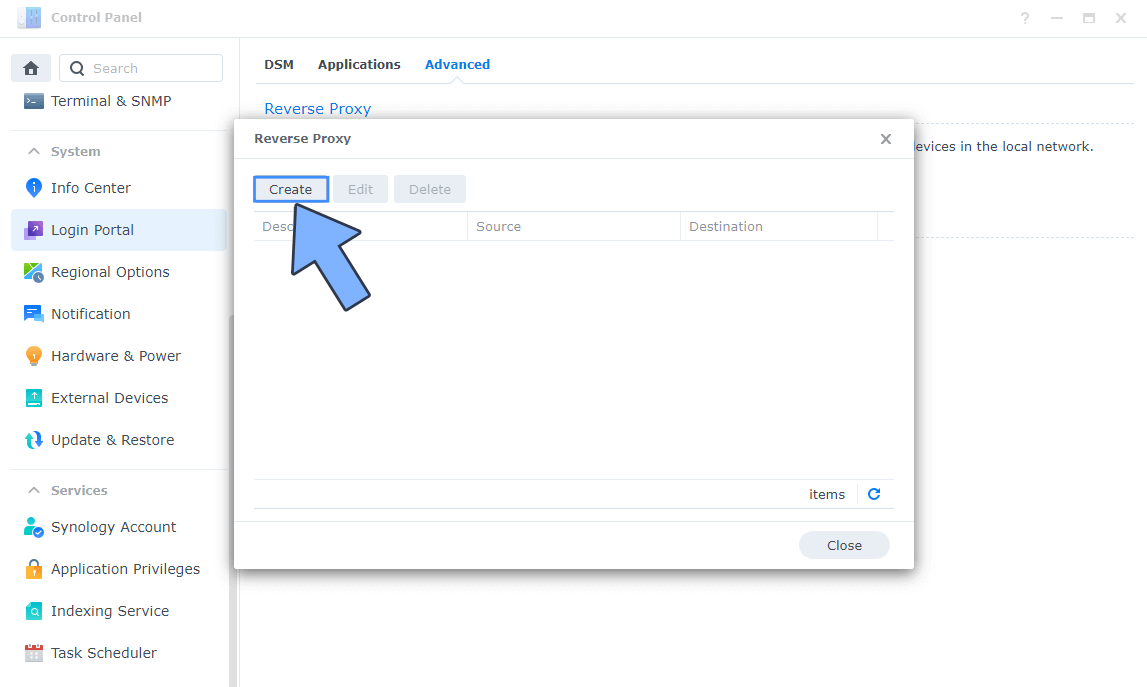
STEP 6
After you click the Create button, the window below will open. Follow the instructions in the image below.
On the General area, set the Reverse Proxy Name description: type in Keila. After that, add the following instructions:
Source:
Protocol: HTTPS
Hostname: keila.yourname.synology.me
Port: 443
Check Enable HSTS
Destination:
Protocol: HTTP
Hostname: localhost
Port: 6185
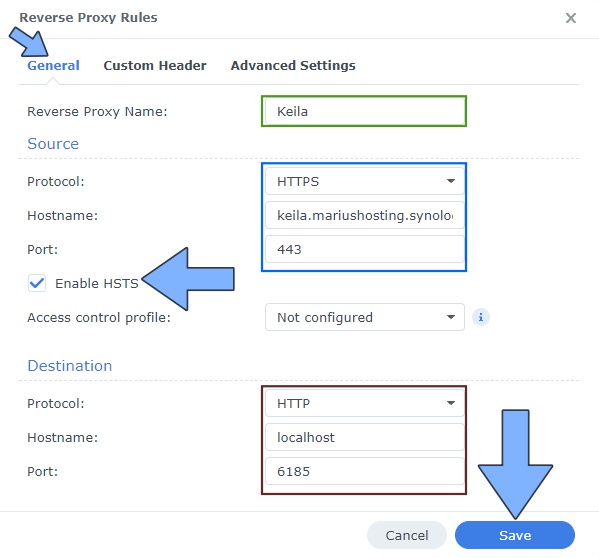
STEP 7
On the Reverse Proxy Rules click the Custom Header tab. Click Create and then, from the drop-down menu, click WebSocket. After you click on WebSocket, two Header Names and two Values will be automatically added. Click Save. Follow the instructions in the image below.

STEP 8
Go to Control Panel / Network / Connectivity tab/ Check Enable HTTP/2 then click Apply. Follow the instructions in the image below.
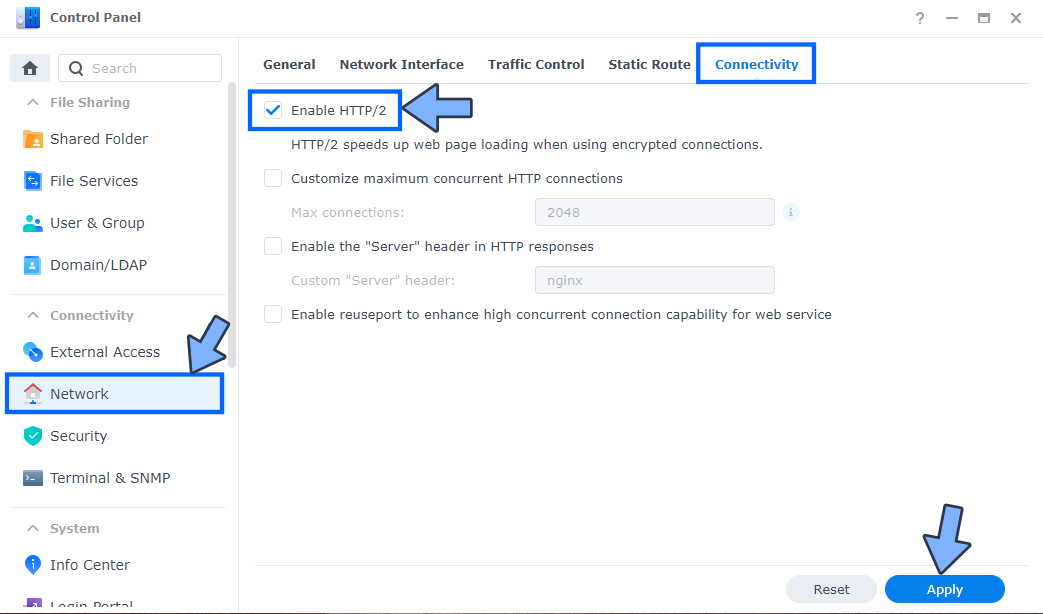
STEP 9
Go to Control Panel / Security / Advanced tab/ Check Enable HTTP Compression then click Apply. Follow the instructions in the image below.
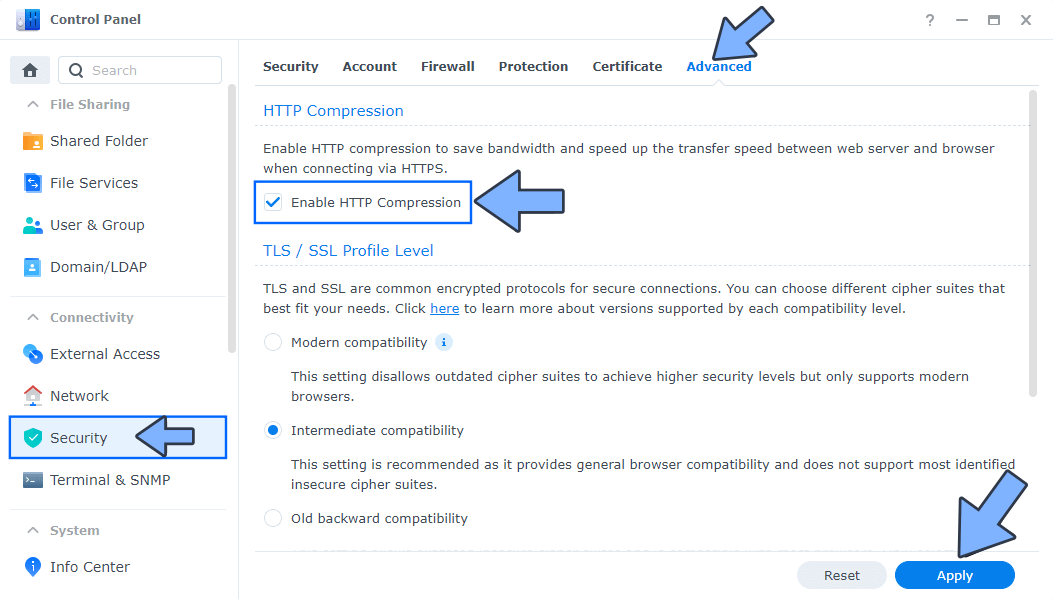
STEP 10
Go to File Station and open the docker folder. Inside the docker folder, create one new folder and name it keila. Follow the instructions in the image below.
Note: Be careful to enter only lowercase, not uppercase letters.
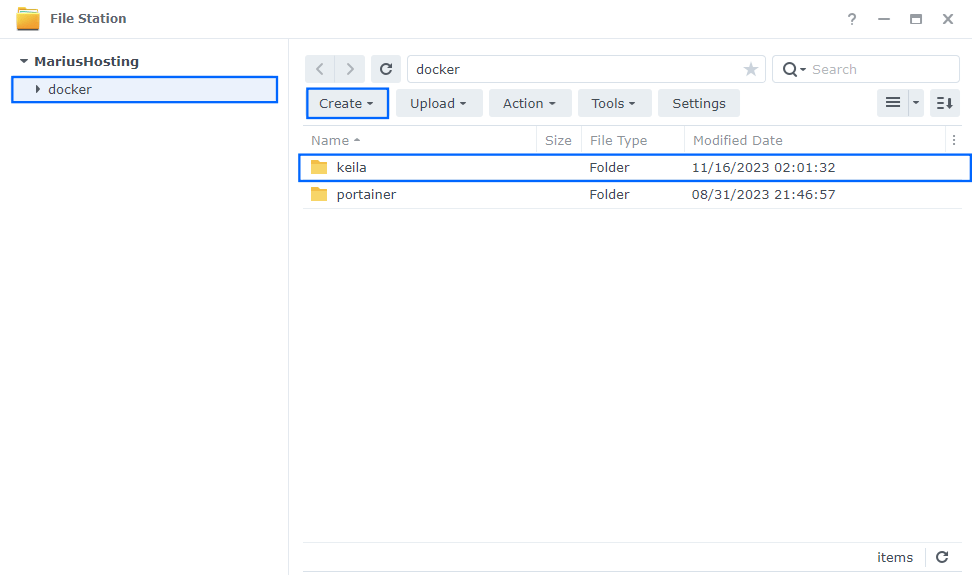
STEP 11
Now create two new folders inside the keila folder that you created at STEP 10 and name them db and uploads. Follow the instructions in the image below.
Note: Be careful to enter only lowercase, not uppercase letters.
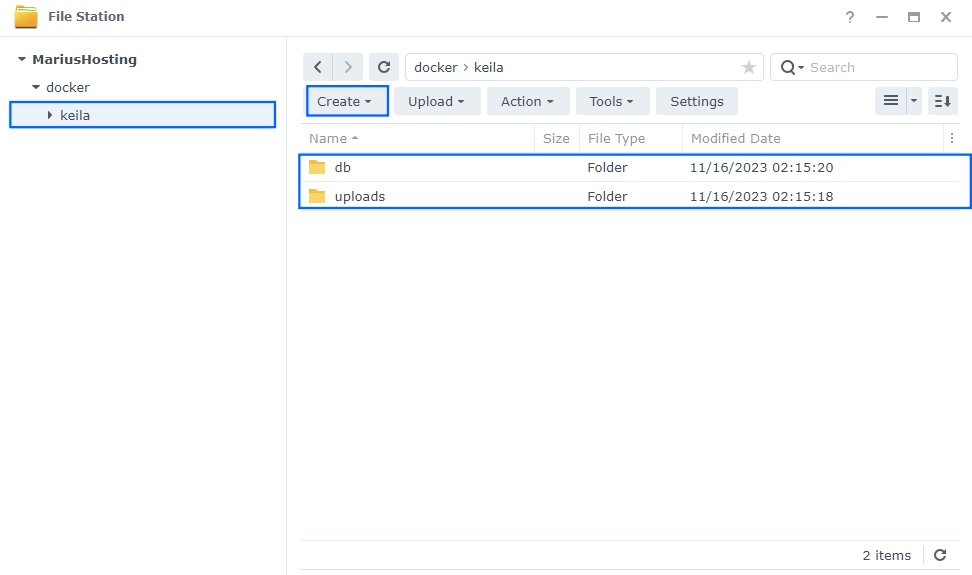
STEP 12
Follow my step by step guide on how to activate SMTP for your Gmail account. This step is mandatory. Note: If you don’t want to use the easiest way for SMTP with Google and you already have SMTP details from your own Mail Server, you can just skip this STEP and use your personalized email SMTP details instead.
STEP 13
Log into Portainer using your username and password. On the left sidebar in Portainer, click on Stacks then + Add stack. Follow the instructions in the image below.
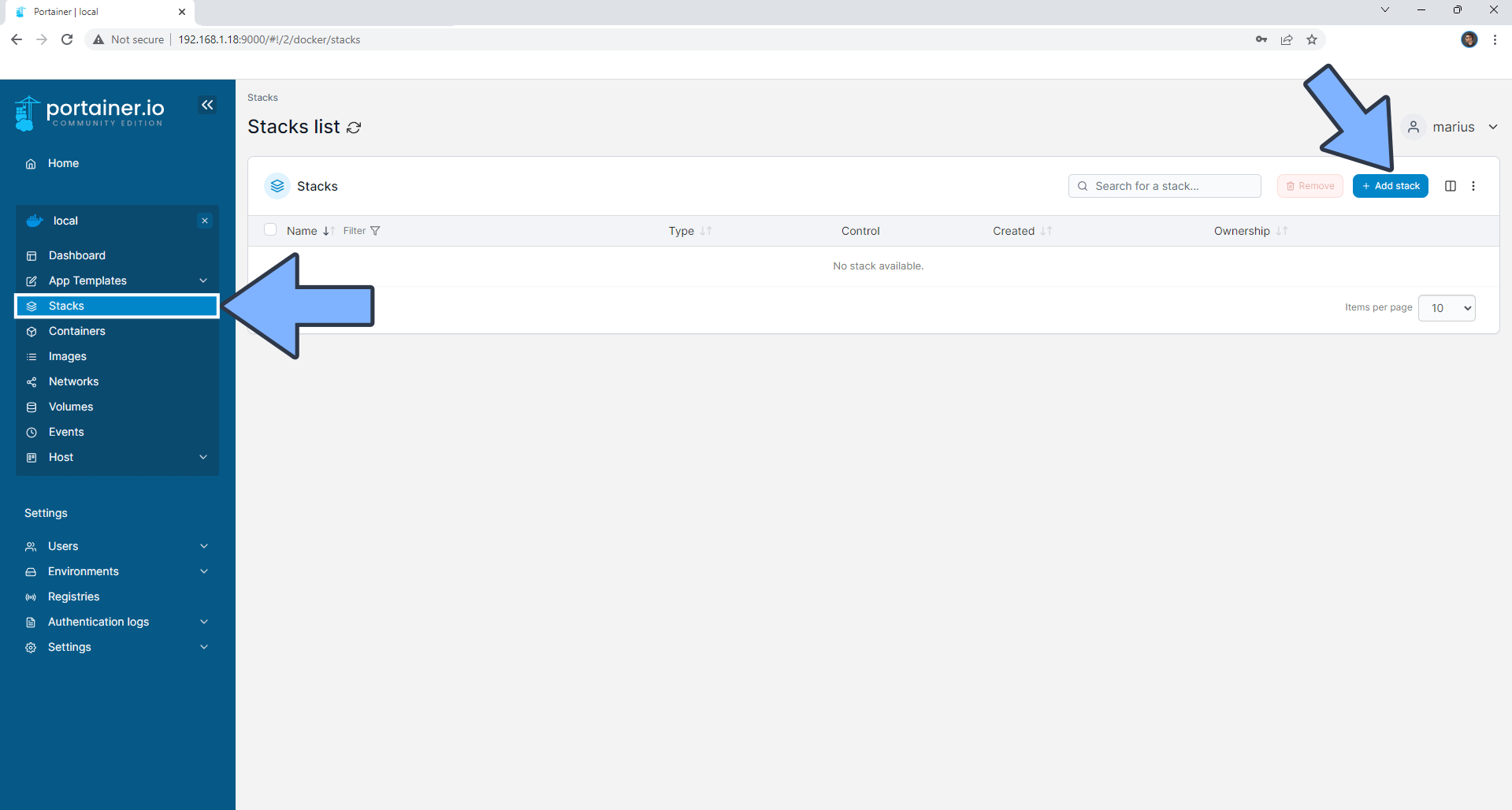
STEP 14
In the Name field type in keila. Follow the instructions in the image below.
services:
db:
image: postgres:16
container_name: Keila-DB
hostname: keila-db
security_opt:
- no-new-privileges:true
healthcheck:
test: ["CMD", "pg_isready", "-q", "-d", "keila", "-U", "keilauser"]
timeout: 45s
interval: 10s
retries: 10
volumes:
- /volume1/docker/keila/db:/var/lib/postgresql/data:rw
environment:
POSTGRES_DB: keila
POSTGRES_USER: keilauser
POSTGRES_PASSWORD: keilapass
restart: on-failure:5
keila:
image: pentacent/keila:latest
container_name: Keila
hostname: keila
security_opt:
- no-new-privileges:true
healthcheck:
test: wget --no-verbose --tries=1 --spider http://localhost:4000
ports:
- 6185:4000
volumes:
- /volume1/docker/keila/uploads:/uploads:rw
environment:
SECRET_KEY_BASE: KjCaHdb4PUfSmSHbeV6jWUqTptgW4N6Q2aWNv3mT9ZWxKYRcJhgyfqbkaGR4WQay
DB_URL: postgres://keilauser:keilapass@keila-db/keila
USER_CONTENT_DIR: /uploads
KEILA_USER: yourown@email
KEILA_PASSWORD: mariushosting
URL_HOST: keila.yourname.synology.me
URL_SCHEMA: https
MAILER_SMTP_HOST: smtp.gmail.com
MAILER_SMTP_PORT: 465
MAILER_SMTP_USER: Your-own-gmail-address
MAILER_SMTP_PASSWORD: Your-own-app-password
MAILER_SMTP_FROM_EMAIL: Your-own-gmail-address
MAILER_ENABLE_SSL: true
MAILER_ENABLE_STARTTLS: false
restart: on-failure:5
depends_on:
db:
condition: service_healthy
Note: Before you paste the code above in the Web editor area below, change the value for SECRET_KEY_BASE. (Generate your own Random 64 length SECRET_KEY_BASE.)
Note: Before you paste the code above in the Web editor area below, change the value for KEILA_USER and type in your own email address.
Note: Before you paste the code above in the Web editor area below, change the value for KEILA_PASSWORD and type in your own password. mariushosting is an example for a password.
Note: Before you paste the code above in the Web editor area below, change the value for URL_HOST and type in your own synology.me DDNS without https:// at the beginning that you have previously created at STEP 6.
Note: Before you paste the code above in the Web editor area below, change the value for MAILER_SMTP_USER and type in your own Gmail address. STEP 12.
Note: Before you paste the code above in the Web editor area below, change the value for MAIL_ENV_PASSWORD and type in your own Gmail app password. STEP 12.
Note: Before you paste the code above in the Web editor area below, change the value for MAILER_SMTP_FROM_EMAIL and type in your own Gmail address. STEP 12.

STEP 15
Scroll down on the page until you see a button called Deploy the stack. Click on it. Follow the instructions in the image below. The installation process can take up to a few minutes. It will depend on your Internet speed connection.

STEP 16
If everything goes right, you will see this message at the top right of your screen: “Success Stack successfully deployed“.
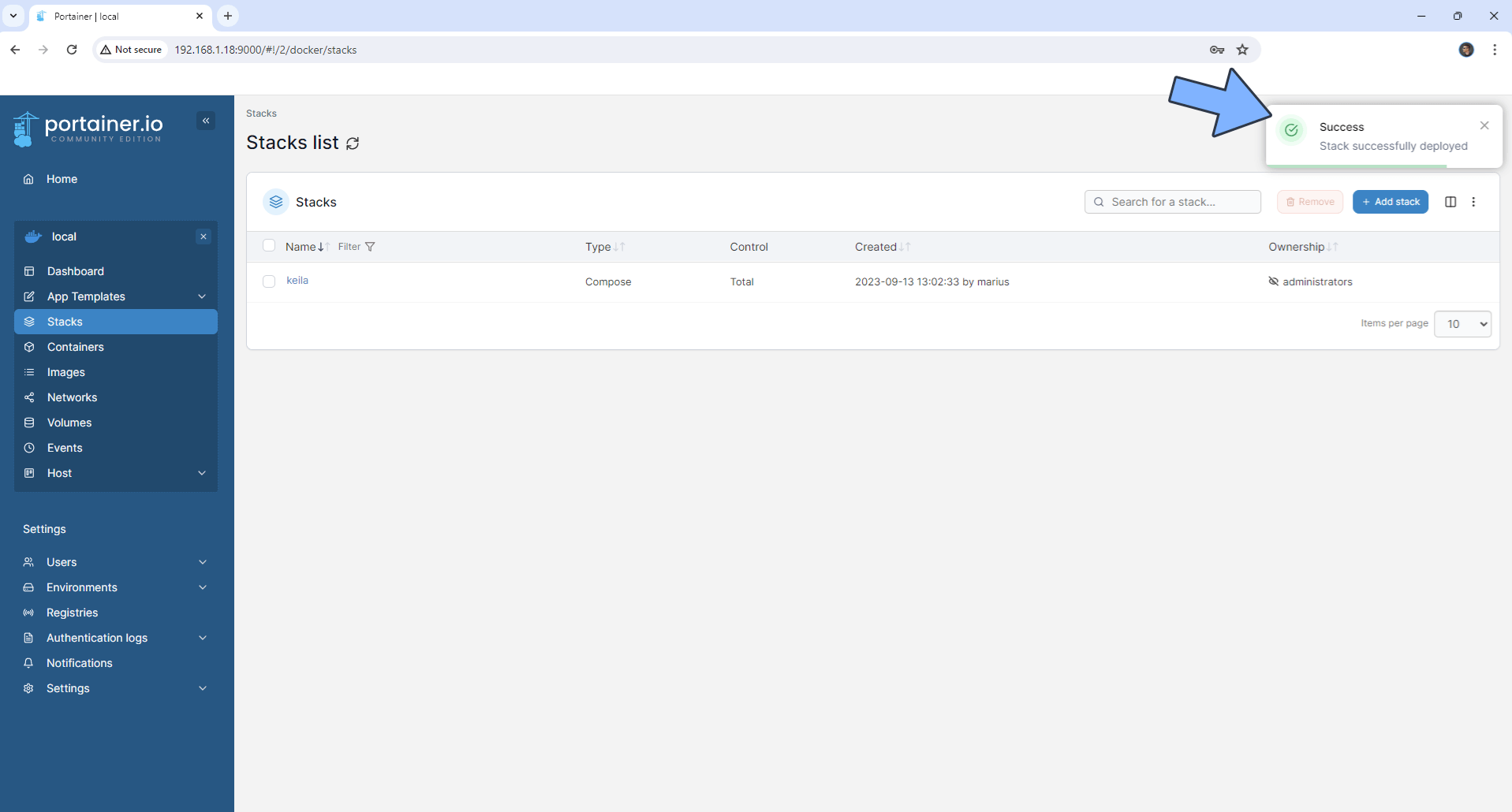
STEP 17
🟢Please Support My work by Making a Donation. Almost 99,9% of the people that install something using my guides forget to support my work, or just ignore STEP 1. I’ve been very honest about this aspect of my work since the beginning: I don’t run any ADS, I don’t require subscriptions, paid or otherwise, I don’t collect IPs, emails, and I don’t have any referral links from Amazon or other merchants. I also don’t have any POP-UPs or COOKIES. I have repeatedly been told over the years how much I have contributed to the community. It’s something I love doing and have been honest about my passion since the beginning. But I also Need The Community to Support me Back to be able to continue doing this work.
STEP 18
Now open your browser and type in your HTTPS/SSL certificate like this https://keila.yourname.synology.me that you have previously created at STEP 6. In my case it’s https://keila.mariushosting.synology.me If everything goes right, you will see the Keila Sign in page. Type in your own Email address (KEILA_USER) and Password (KEILA_PASSWORD) that you have previously added at STEP 14. Click Sign in. Follow the instructions in the image below.
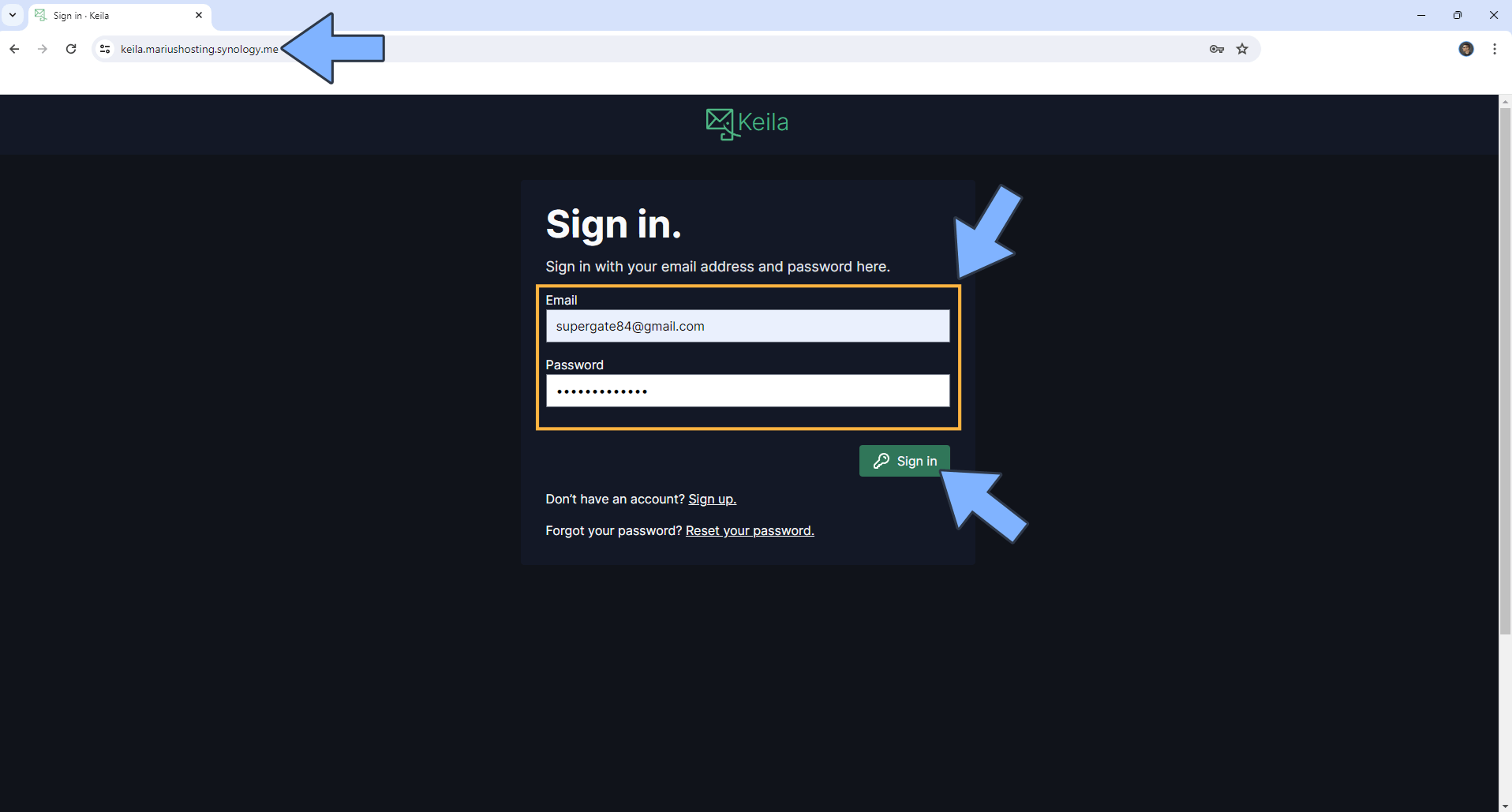
STEP 19
Click Crate your first project. Follow the instructions in the image below.
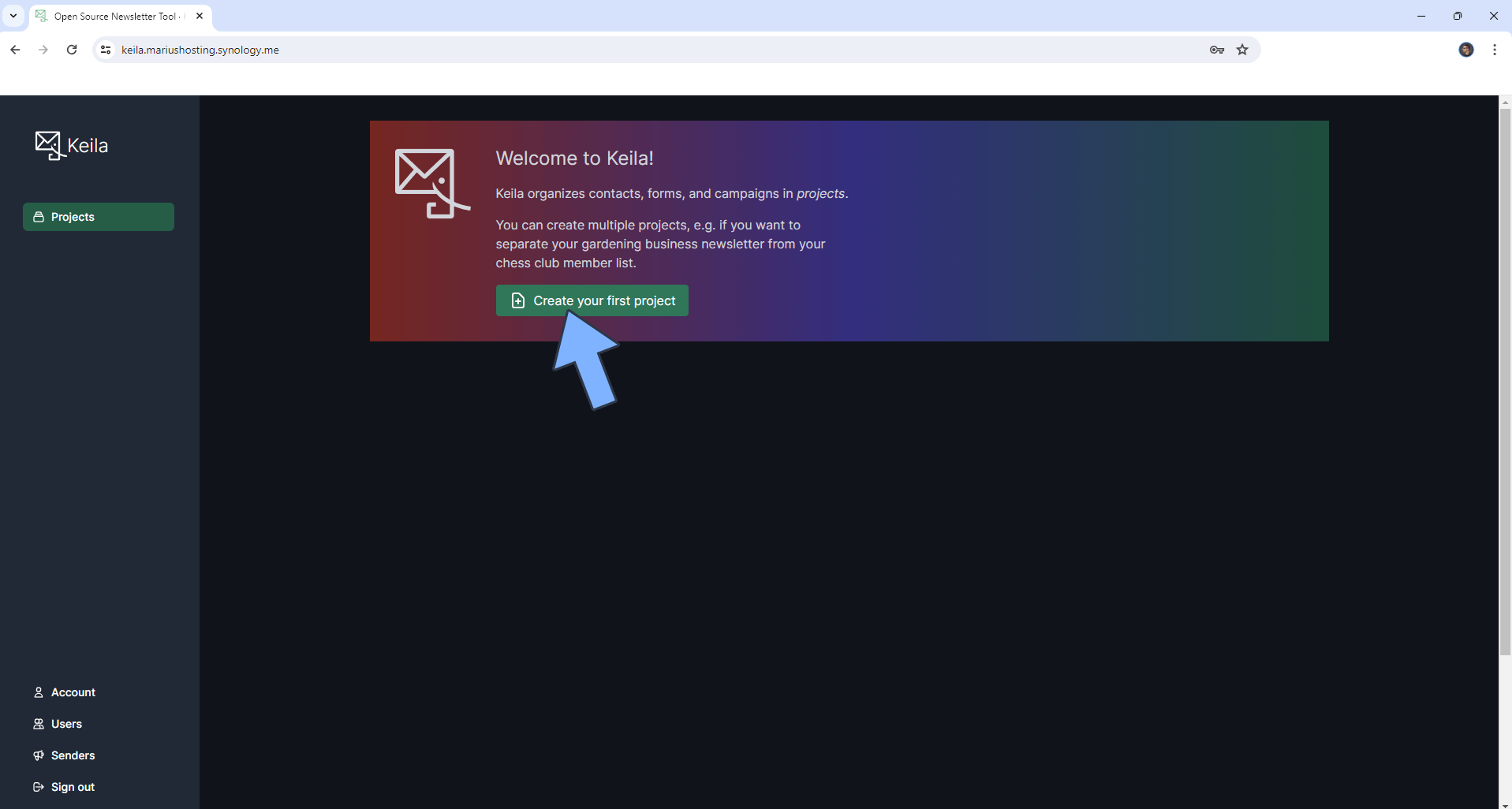
STEP 20
Type in a Project name then click Save. Follow the instructions in the image below.
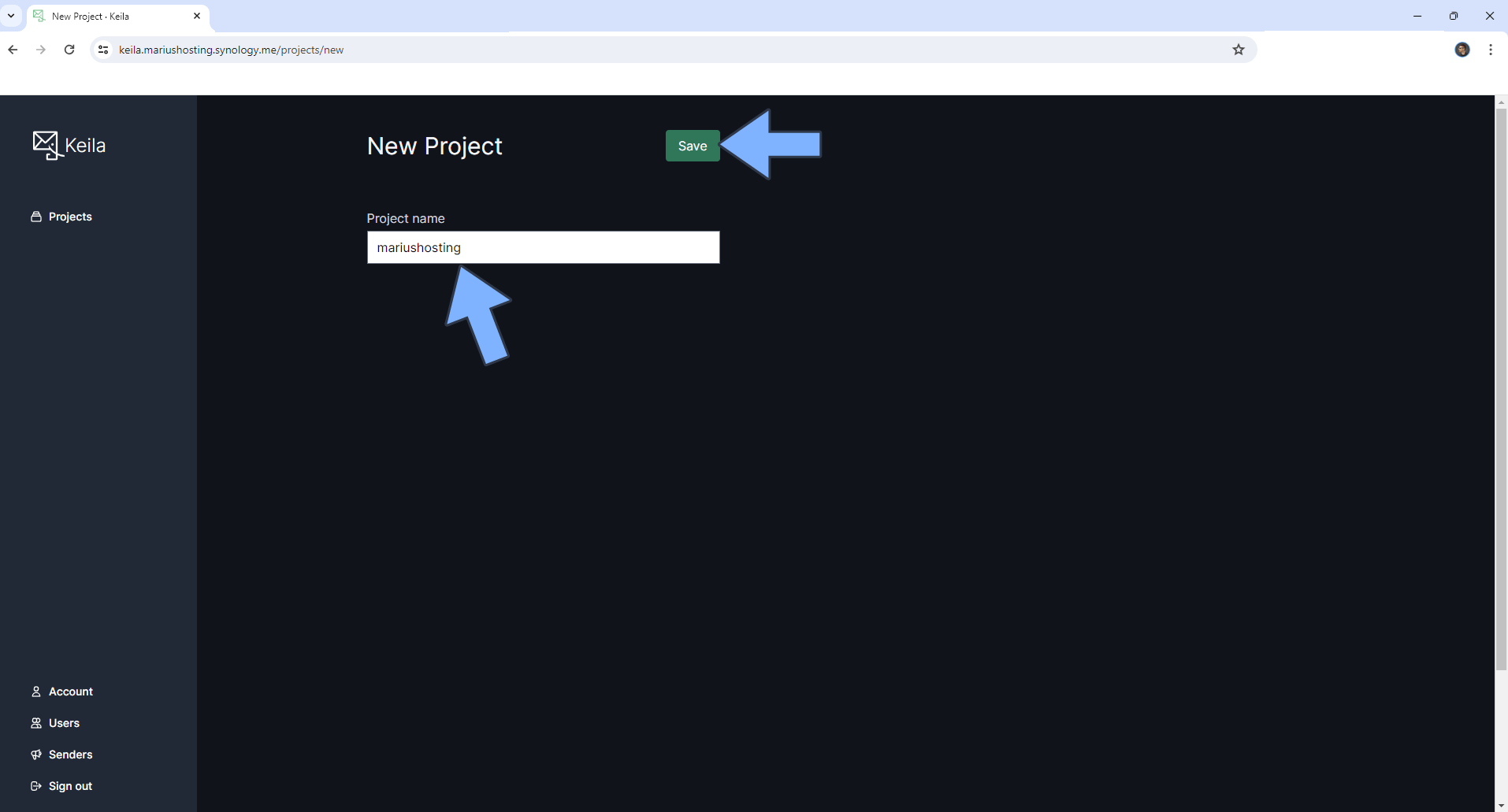
STEP 21
Your Keila dashboard at a glance!
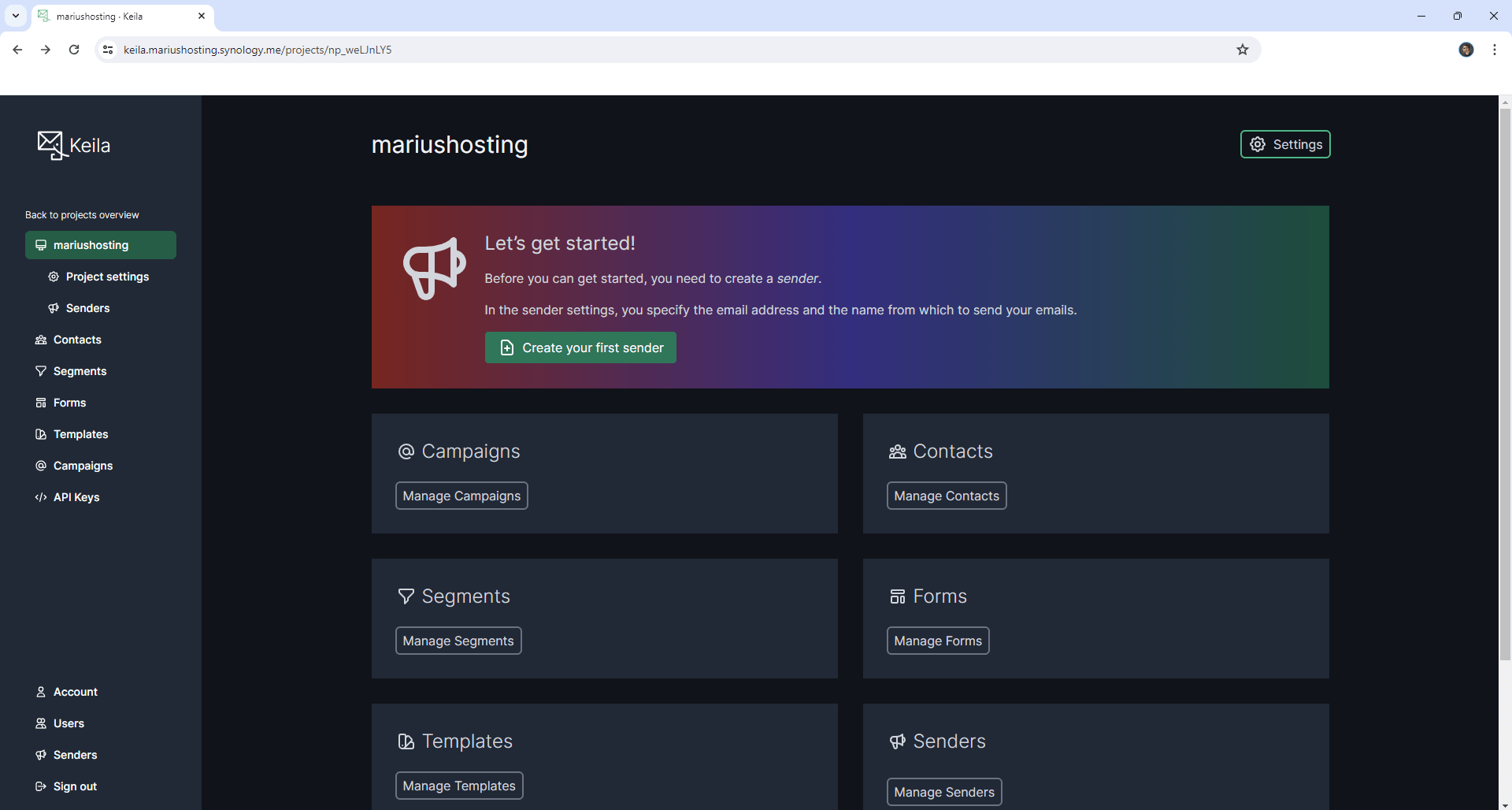
Enjoy Keila!
If you encounter issues by using this container, make sure to check out the Common Docker issues article.
Note: Can I run Docker on my Synology NAS? See the supported models.
Note: How to Back Up Docker Containers on your Synology NAS.
Note: Find out how to update the Keila container with the latest image.
Note: How to Free Disk Space on Your NAS if You Run Docker.
Note: How to Schedule Start & Stop For Docker Containers.
Note: How to Activate Email Notifications.
Note: How to Add Access Control Profile on Your NAS.
Note: How to Change Docker Containers Restart Policy.
Note: How to Use Docker Containers With VPN.
Note: Convert Docker Run Into Docker Compose.
Note: How to Clean Docker.
Note: How to Clean Docker Automatically.
Note: Best Practices When Using Docker and DDNS.
Note: Some Docker Containers Need WebSocket.
Note: Find out the Best NAS Models For Docker.
This post was updated on Sunday / May 11th, 2025 at 4:13 PM
